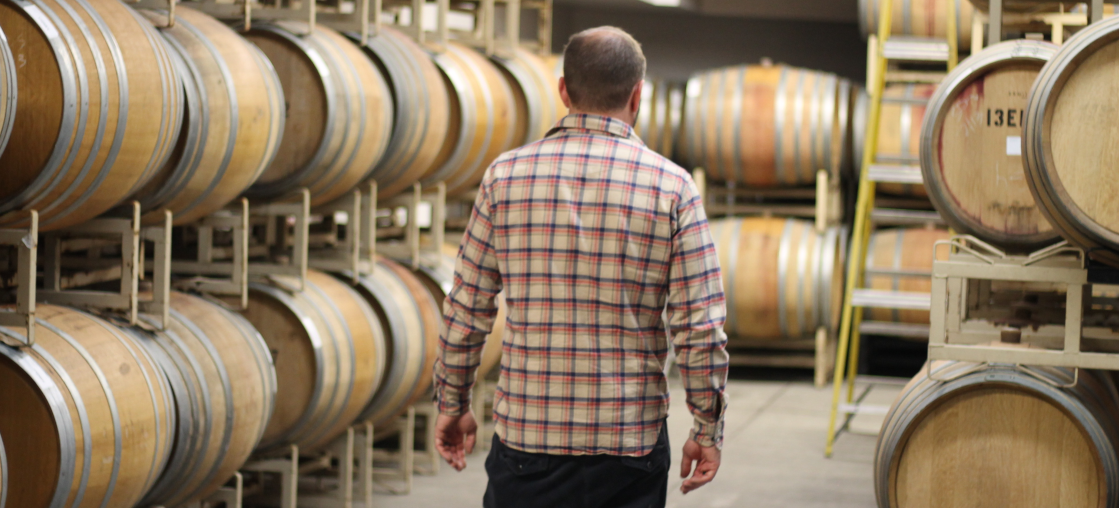A New Entrant into Old-Vine Winemaking
A couple of weeks ago, I gathered with the K&L Redwood City staff to taste through a series of new domestic wines. Two wines from a new label named Precedent stopped me in my tracks. The first was an Evangelho Vineyard Zinfandel. Rich, layered and complex, it was a field blend of several varieties grounded in Zinfandel from a legendary vineyard site. The second, a White blend from Wirz Vineyard, had the soaring aromatics of a Riesling with bright acid and an incredibly expressive minerality. Both wines retailed for under $25. My next thoughts were: “What the hell is this?” and “Who the hell is making this?” Which is how I found myself navigating a steep, treacherous, one-lane road to the top of the Santa Cruz Mountains. At Thomas Fogarty Winery, I met Nathan Kandler, winegrower for Fogarty, and owner and winemaker of Precedent Wines.
Nathan comes off as earnest, soft-spoken and focused. He graduated with a degree in Enology from CSU Fresno and went on to work stints at Benzinger, Frick, Schug and Testarossa, as well as with the Australian producer Torbreck, in the Barossa Valley. As we walked through the vineyards he explained that Precedent began in 2006 shortly after being hired on at Fogarty. In his first years, he crafted Pinot Noir from Marin County and Syrah from Bennett Valley, searching to develop his voice as a winemaker. “Friends told me I should stick to Pinot Noir and Chardonnay, but there were plenty of people out there who were focusing on that. I was looking to add something to the conversation of wine in California,” he told me.
The opportunity came in 2010, when Tegan Passalacqua, winemaker at Turley and an old-vine treasure hunter, turned Kandler onto Evangelho Vineyard. Evangelho is one of the most unique vineyards in California. It has some of the oldest vines in the country, planted by Portuguese immigrants on the dry alluvial sands of Contra Costa County in 1890. Around the turn of the century, vineyards were commonly planted to a mix of different varieties. Throughout the vineyard are Zinfandel, Mataro, Carignan, Muscat, and Palomino, alternating from one vine to the next. “The age, the fact that it’s on its own roots, the fact that it’s dry farmed, the mix of varieties there. It’s a dream. You just don’t find that very many places.”
Equally as compelling is his Wirz Vineyard white blend. Located in the Cienega Valley just a few miles south of the city of Hollister, Kandler’s block is dominated by Riesling planted in 1952. “It’s a really challenging site because it’s dry farmed. So there’s no water. It’s really interesting to see a vineyard that is so at the whim of mother nature, swinging back and forth. The wines from the dry years are so intense, but the ‘17 is in more of an elegant style.” Tasting the ‘17 in barrel, I was struck by gorgeous notes of kaffir lime, a brightly focused acidity and an extraordinary weight and depth on the palate. I found the wine totally unique and delicious, driven equally by minerality and fruit.
In the past few years, a number of new labels focusing on historic vineyards have been gaining popularity. Producers like Bedrock, Carlisle, and Terre Rouge have been joining the ranks of wineries such as Ridge and Turley, who have made a name for themselves by focusing on old-vine Zinfandel, as well as other mixed-variety wines from historic sites. After tasting through Kandler’s wines, I’m convinced Precedent belongs on the short list of old-vine winemakers who deliver exceptional quality.
Looking out past the vines to the San Francisco Bay below, I asked Kandler what was next for Precedent. “There’s a lot more land left to be explored in Lodi. You can make the wines at really good price points. I want to make wines that somebody like me would want to buy.” And as for continuing to root out historic vineyards? “I’m trying, but it's becoming harder. I’m pretty selective about the sites I want to work with. Not just because it’s old, there has to be the potential for great wines.”
- Thomas Smith



